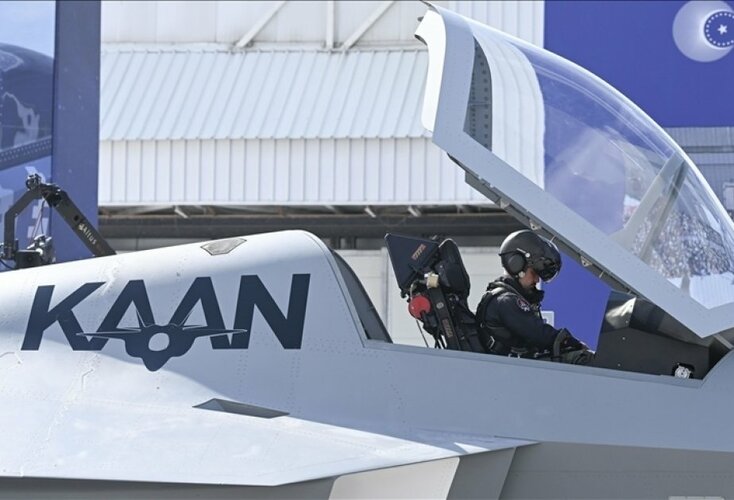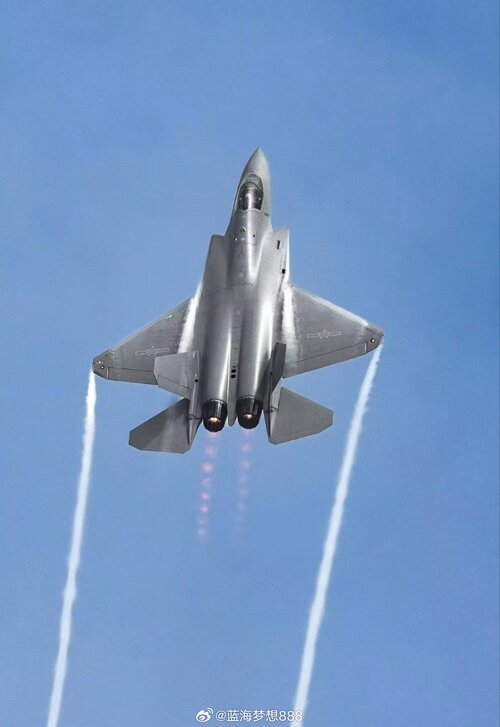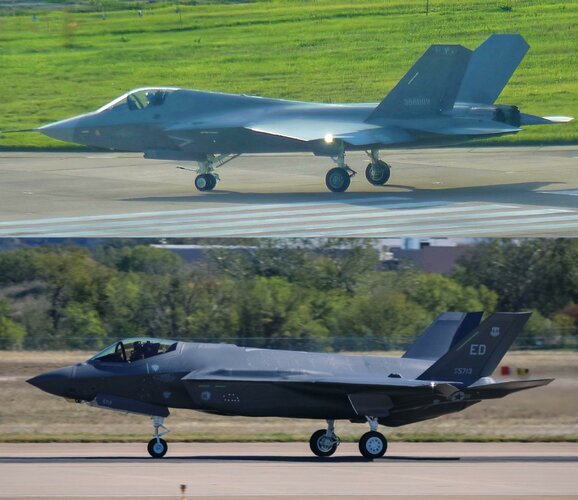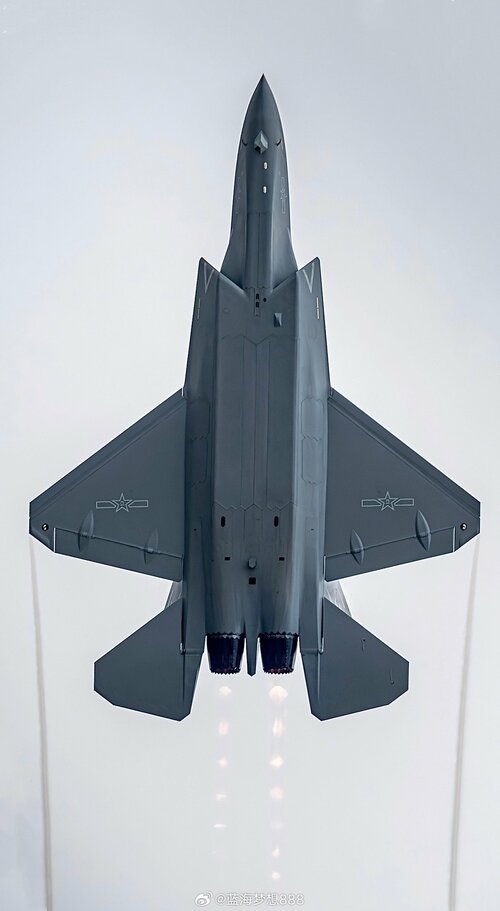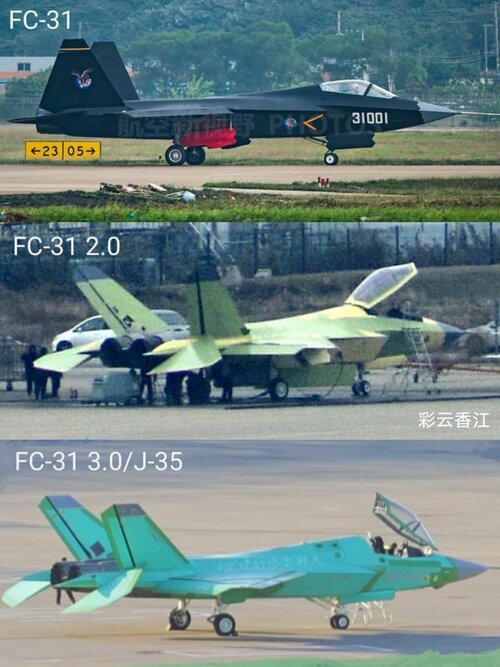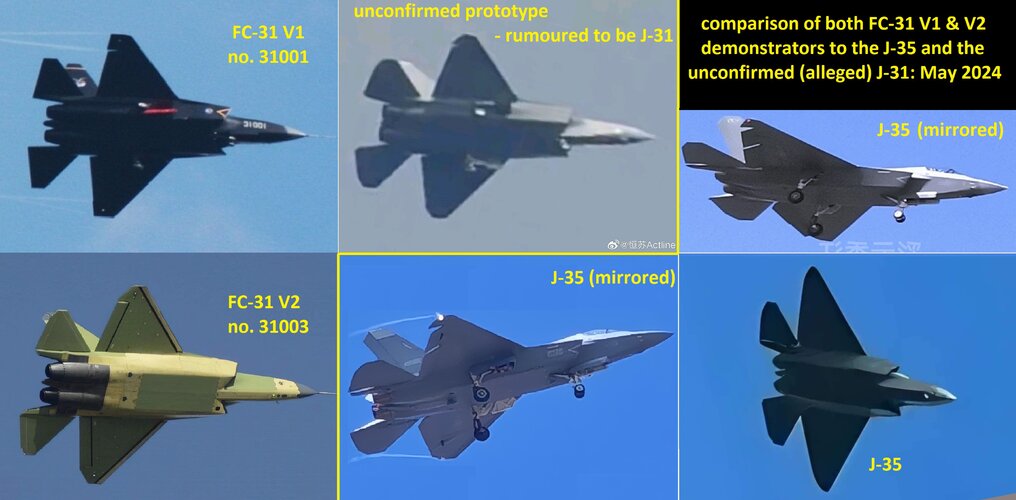Colonial-Marine
UAVs are now friend, drones are the real enemy.
- Joined
- 5 October 2009
- Messages
- 1,468
- Reaction score
- 1,320
I'm of the belief that we don't really know enough about the J-35 to say how much it benefits from not having those same restrictions. Realistically I can't imagine its aerodynamic performance is all that different from the F-35A although it might benefit from a somewhat lower weight.VTOL requirements dominate the design of any air vehicle. Hence the F-35B influenced the layout, aerodynamics, structures etc of all three versions as the requirement on the JSF program was a common, or as common as possible airframe. Thus the F-35A and C versions are significantly compromised in terms of what their aerodynamic performance could have been. J-35 is effectively what F-35A and C should have been without the VTOL compromise.
In my understanding some compromise was accepted as a result of the combination of requirement for the STOVL and CV variants. The STOVL variant imposed the length limitation so it could fit on the elevators of US Navy LHAs and LHDs. As a result, the original Lockheed ASTOVL-CALF-JAST design progression used a delta layout with canards. While I personally have a preference for a more conventional wing and tail, in this case the delta + canards configuration worked better within that length limit. Maybe it was also more suitable given the change in center of gravity for the lift fan.They weren't compromised by the B version in any single way. I didn't bring up the Convair model 200 experience for nothing - it was a very specific program that specifically showed that a combination of CTOL and VTOL doesn't require compromises.
Moreover, the only significant problems B version brought into the program were (1)alcoa alloy troubles(specific to this version and not affecting others) and engine upgrade controversy.
Then when JAST became JSF they needed a CV version, and the Navy didn't find the flight characteristics of the existing design acceptable for CATOBAR operation, although I'm not aware of the specifics as to why. So the aircraft was redesigned with a more conventional wing and tail as demonstrated on the X-35. Boeing had to make a similar change at a late stage on their JSF design, likely because the Navy didn't like whatever testing of the X-32 had revealed. This is just speculation, but the conventional layout Lockheed switched to might have been better for stealth shaping too.
So overall it seems like the F-35 would have had better aerodynamics if it used either used the original delta + canards layout or if they had a few more feet of length to work with. But that isn't to say the F-35 is necessary a poor performer as it is.
For some reason the STOVL variant seems to get all of the blame for any and all performance compromises made with the F-35, but the CV variant was the late-comer to whole effort. Previous programs definitely seemed to reinforce the concept that you could field a very capable STOVL fighter along with a CTOL counterpart that would be entirely competitive to a similar design without any aspirations of performing vertical take-offs or landings. So, I can't fault the decision to pursue that concept. Fundamentally all aircraft design involves compromises to conform with restraints on size, engine power, cost, etc. to fulfill the required role. Same is true of most engineering in general I'd think.



